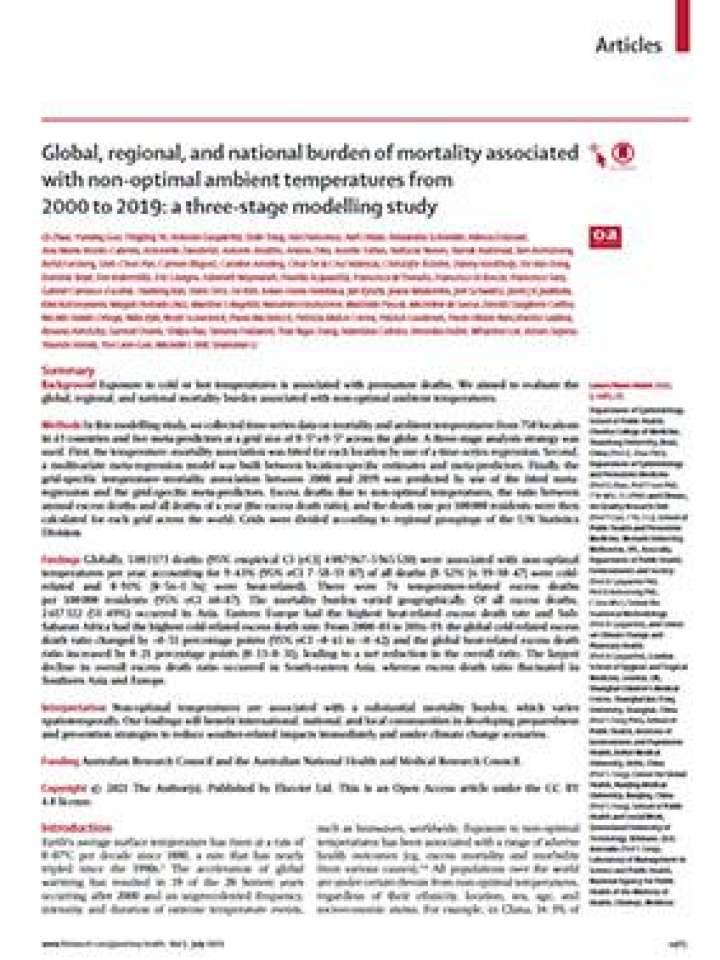Global, regional, and national burden of mortality associated with non-optimal ambient temperatures from 2000 to 2019: a three-stage modelling study
This study aimed to evaluate the global, regional, and national mortality burden associated with non-optimal ambient temperatures. Non-optimal temperatures are associated with a substantial mortality burden, which varies spatiotemporally. The below findings will benefit international, national, and local communities in developing preparedness and prevention strategies to reduce weather-related impacts immediately and under climate change scenarios.
Globally, 5 083 173 deaths (95% empirical CI [eCI] 4 087 967–5 965 520) were associated with non-optimal temperatures per year, accounting for 9·43% (95% eCI 7·58–11·07) of all deaths (8·52% [6·19–10·47] were cold-related and 0·91% [0·56–1·36] were heat-related). There were 74 temperature-related excess deaths per 100 000 residents (95% eCI 60–87). The mortality burden varied geographically. Of all excess deaths, 2 617 322 (51·49%) occurred in Asia. Eastern Europe had the highest heat-related excess death rate and Sub-Saharan Africa had the highest cold-related excess death rate. From 2000–03 to 2016–19, the global cold-related excess death ratio changed by −0·51 percentage points (95% eCI −0·61 to −0·42) and the global heat-related excess death ratio increased by 0·21 percentage points (0·13–0·31), leading to a net reduction in the overall ratio. The largest decline in overall excess death ratio occurred in South-eastern Asia, whereas excess death ratio fluctuated in Southern Asia and Europe.
Explore further
